Aurelia cooperation with Carisbrooke Shipping on route optimization and GHG reduction for Vectis Pride
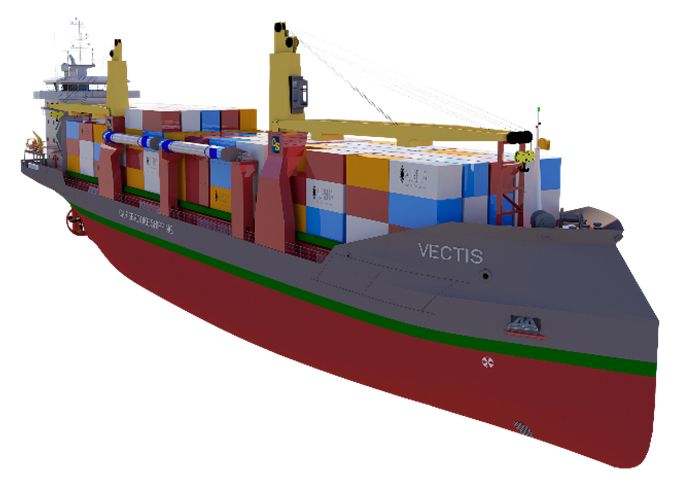
AURELIA, a company specialized in zero-emission naval engineering solutions, has collaborated with Carisbrooke Shipping, a leading shipping company, to implement new technologies that reduce SOX, NOX and CO2 emissions while maintaining the payload as much as possible. The aim is to achieve zero emissions, and every opportunity to reduce emissions is being seized upon.
With Aurelia's technical expertise and Carisbrooke's commitment to reducing emissions, this project is an important step towards reducing the environmental impact of shipping. The partnership between Aurelia and Carisbrooke Shipping demonstrates the shipping industry's determination to seek out new technologies and solutions that will enable it to achieve zero emissions vessels in the near future.
Thanks to Aurelia's experience in naval engineering and close relationships with suppliers with the most advanced technologies available today, a technical proposal was developed for boosting Carisbrooke's Vectis Pride.
The project involved boosting the Vectis Pride, a general cargo ship with a deadweight of 11,183 ton, 123.95 meters in length, 17.4 meters of beam, and 8.46 meters of draft. The propulsion system consists of one main engine of 3,000 kW, two auxiliary engines of 400 ekW each, and one shaft generator of 525 kVA. Two cranes are located in starboard side with a swl of 80 ton each at 15 meter radius.
The analysis performed covers the feasibility study of increasing the speed of the Vectis Pride to 12 knots by proposing various alternatives of zero-emission technologies for a specific route between Spain and Canada. These alternatives are:
- 35x5 meter Norsepower rotor on the main deck.
- 16x2.8 meter Econowind Ventofoil sails on the main deck.
- Nedstack fuel cells and hydrogen as a fuel for hotel loads.
ALTERNATIVE I – ROTORS
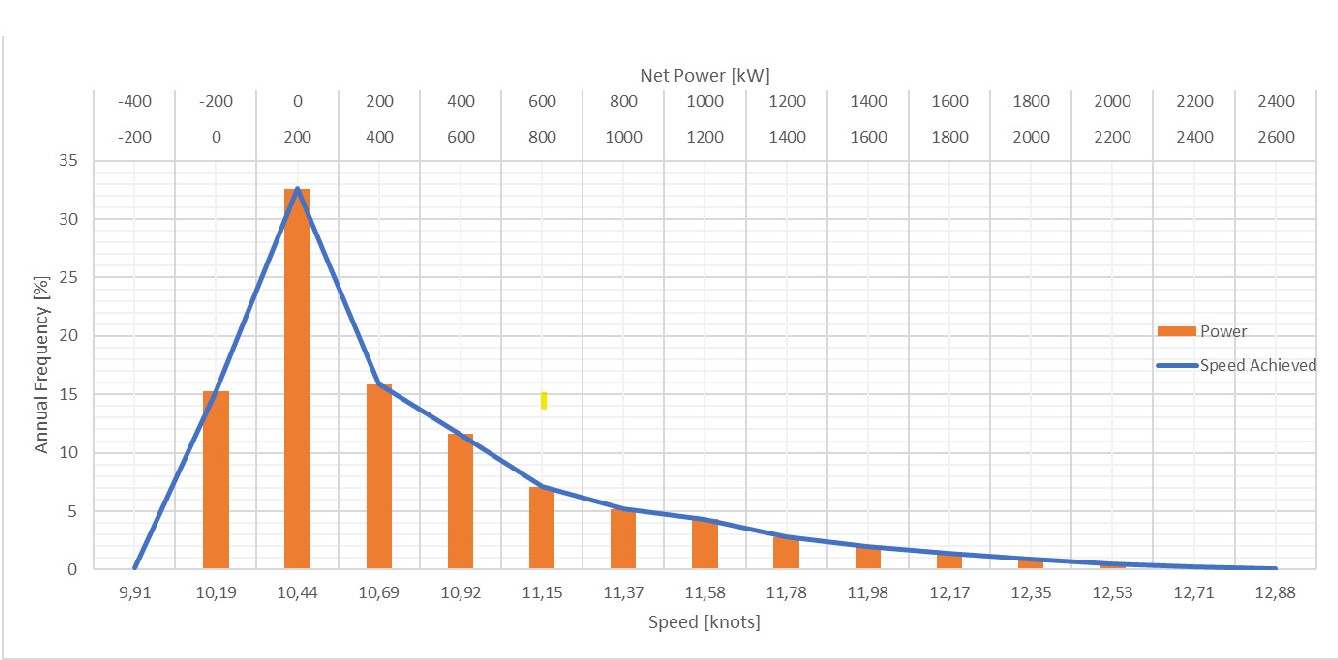
The 35x5 meter rotor under study, with an ideal wind condition of 25 m/s and optimal direction, can provide 2500 kW of propulsion power equivalent. For the average wind conditions in a year on the Vectis Pride route, the average net power of 1 (one) rotor is 345 kW.
The speed achieved using 1 (one) rotor is 11.1 knots. By using this, the annual reduction of CO2 emissions is 7.2% compared to the current status of the vessel. The annual fuel savings will be approximately 144,500 USD/Year
Rotor is located in the fore part of the vessel. A reinforcement of the hatches was done where the rotor foundation is fixed. Folding the rotor is an option available when this is needed in port or in navigation.
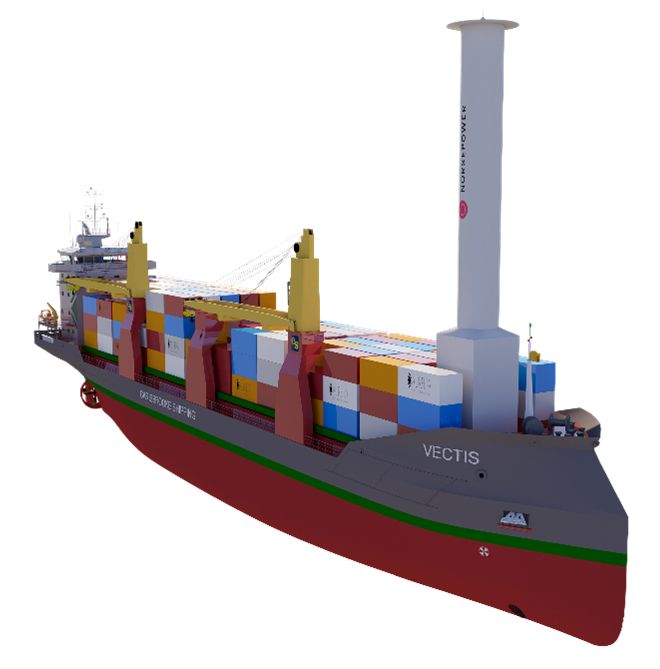
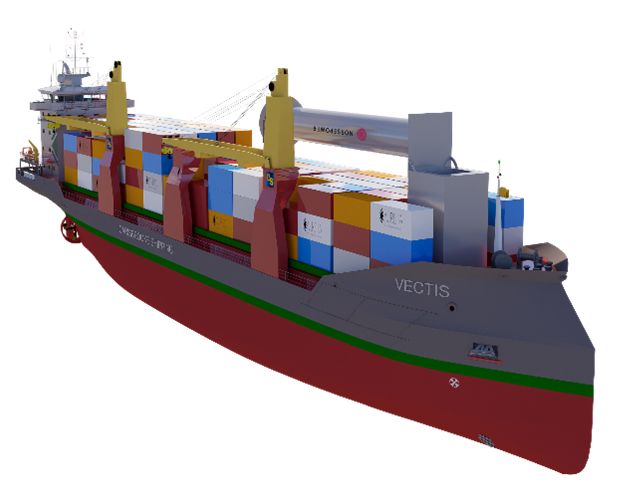
Rotor is located in the fore part of the vessel. A reinforcement of the hatches was done where the rotor foundation is fixed. Folding the rotor is an option available when this is needed in port or in navigation.
For the payload impact, the number of containers needed to be removed from the main deck when this alternative is used is 18 TEUs (twenty-foot equivalent units).
ALTERNATIVE II – SAILS
The sails in this alternative are 16 meters high, with a chord of 2.8 meters, a width of 1.3 meters, and an area of 44.8 m2 . In order to study the boosting of the Vectis Pride, Aurelia's team of engineers installed six sails, four on the port side and two on the starboard side. Special attention was paid to the possible interaction between the sails and the cranes, and Aurelia's team of engineers carefully studied the optimal way to stow the sails during loading and unloading operations in port to avoid interference with the cranes. With this, the Vectis Pride will now be able to take advantage of the power of the wind in addition to traditional propulsion systems, reducing emissions and operating costs while increasing efficiency.
For the average wind conditions in a year on the Vectis Pride route, the average net power of 1 (one) sail is 235.1 kW.
The speed achieved using 6 (six) sails is 12.12 knots. By using this alternative, the reduction of CO2 emissions is 14.9% compared to the current status of the vessel. The annual fuel savings will be approximately 299,500 USD/Year.
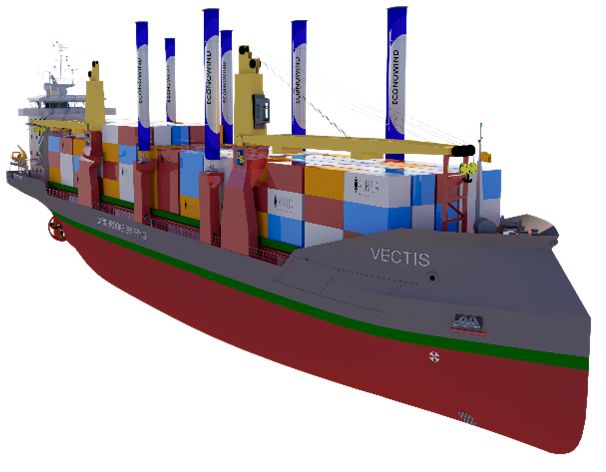
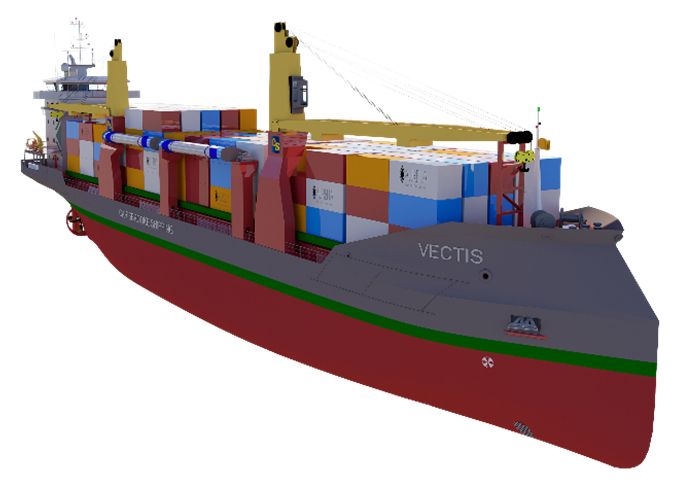
For the payload impact, the number of containers that must be removed from the main deck to use this alternative is 13 TEUs.
ALTERNATIVE III – HYDROGEN
This alternative examines the use of hydrogen as a fuel to feed the ship's loads, which are currently powered by auxiliary engines running on fossil fuels. The storage of hydrogen was evaluated in two states:
- Gaseous at a pressure of 381 bar and a temperature of 20°C.
- Liquid at a pressure of 4 bar and a temperature of -253°C.
As initial input it is considered that the vessel has 6 (six) sails installed (mentioned in ALTERNATIVE II – SAILS) and hydrogen is added as fuel. The current PTO of the Vectis Pride and the sails power demand were considered.
The number of hydrogen storage containers required will vary according to the hydrogen storage state. In the case of gaseous hydrogen with the mentioned conditions, 15 containers will be required. For liquid hydrogen with the mentioned conditions, 7 containers will be required.
